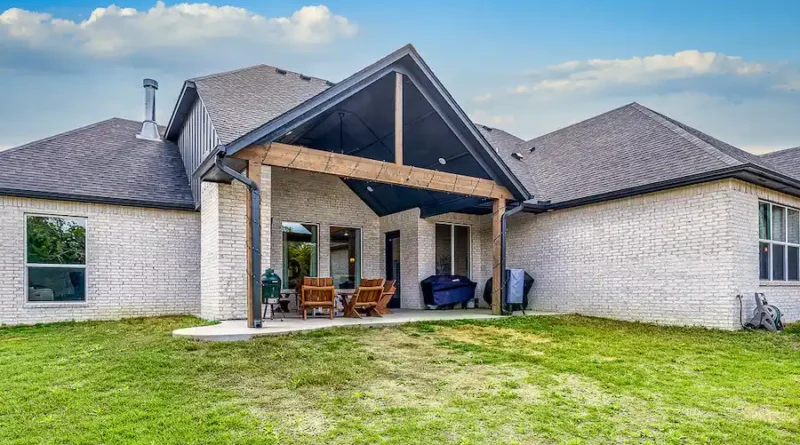Enhancing Your Home’s Curb Appeal: The Impact of Landscape Design on Property Value
allure of a home extends beyond its four walls. The exterior presentation can make a significant first impression, which is crucial for potential buyers, or simply heighten the homeowner’s pride. When discussing residential landscape design’s aesthetic and financial merit, the term constantly surfaces as ‘curb appeal’ – a well-designed frontage that boosts your home’s face value like a welcoming smile. Indeed, a captivating front yard in a pristine neighborhood such as Bay County can be an invaluable asset. Curb appeal transcends mere visual pleasure; it has the potential to raise your property’s market value substantially.
The Basics of Curb Appeal
Curb appeal is a composite measure representing the overall attractiveness of a property from an onlooker’s vantage point from the street. Dissecting curb appeal elements encompass aspects such as a well-manicured lawn, the vibrancy and variety of plants in garden beds, the functionality and appearance of pathways and driveways, and even the harmony of exterior paint colors with the surrounding landscape. It extends beyond simple landscaping to encompass every aspect observed outside the property. An inviting outdoor space can engender an immediate emotional connection, instilling a sense of home even before setting foot indoors.
Landscape Design as an Investment
Landscape design is a crucial long-term investment for any homeowner. It is not simply aesthetic—it’s a strategic enhancement that plays a pivotal role in real estate. Investments in professional landscape design can often translate into equivalent hikes in your property’s valuation. According to insights from experts, exterior projects such as lawn care and landscape upgrades can have a return on investment of as much as 100 percent at the time of sale, meaning homeowners could potentially double their outlay when their home is sold. Studies have underscored this trend, showing that curb appeal can often be the deciding factor in the home buying decision process, as it impacts a buyer’s perception of the home and their willingness to pay a premium for a property that presents a perfect picture.
Key Landscape Elements That Boost Property Value
A home’s landscape is like a canvas where each element contributes to the final masterpiece. Lawn care should never be undervalued; the lush, green expanse signifies order and care when neatly trimmed. Flower beds blooming with life add a riot of color and can signal to discerning buyers the care taken in the home’s maintenance. Other landscaping structures, such as hardscapes—patios, walkways, fountains, and retaining walls—offer beauty and practical benefits, setting the stage for an outdoor living space. Outdoor lighting serves a dual purpose, amplifying curb appeal with dramatic accent lighting while bolstering home security.
Adding Personal Touches without Overpersonalizing
Home is a personal sanctuary; many homeowners wish to imprint their unique touch. While this individualism is essential, it’s equally critical to tread the fine line between personalization and over-customization, especially when considering future property sales. Approach landscape design with a blend of personal favorites and tried-and-true marketable features. For instance, while bold statues or avant-garde art pieces can reflect personal taste, they may only cater to some people’s palate. Thus, while adding personal touches to your landscape, aim for elements that enhance rather than overpower the natural beauty of the outdoor space.
Sustainable Landscaping Practices
Environmental sustainability is steadily climbing the priorities for homeowners and buyers alike. Modern landscaping has thus shifted towards practices that support ecosystem health and resource conservation. An example is xeriscaping, which involves selecting plants that need minimal watering, reducing both environmental impact and maintenance needs. Using native plants ensures lower water usage and better survival rates as they are attuned to the local climate. The economic benefit here is twofold: firstly, in the cost savings on water and maintenance, and secondly, in the enhanced appeal to the environmentally conscious segment of the homebuying market.
DIY vs. Professional Landscape Design
A debate often arises among homeowners considering a landscaping project: should you go the do-it-yourself route, or is it better to invest in professional landscape design services? Both options have their merits. A DIY project can imbue a garden with the essence of the homeowner, potentially leading to significant personal satisfaction and cost savings. However, it requires a substantial time commitment, research, and some level of skill. On the other hand, professional landscapers bring expertise, efficiency, and the promise of a polished result. They can navigate the intricacies of landscape design, from soil science to the architectural aspects of hardscaping. Having a clear vision of the time, effort, and outcome you expect can guide you toward the best choice for your circumstances.
Visit the rest of the site for more interesting and useful articles.

